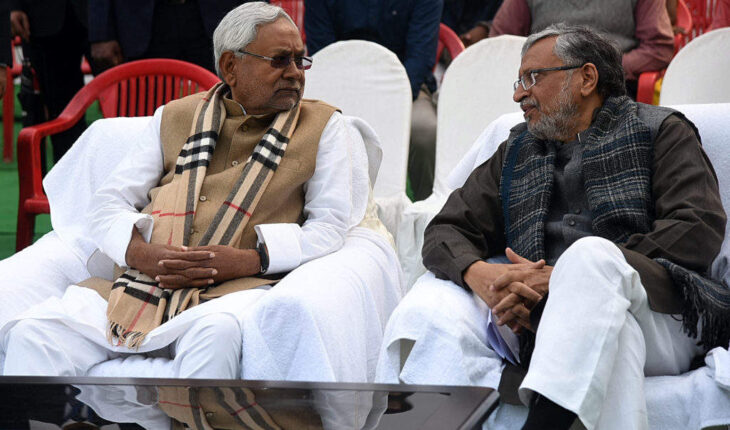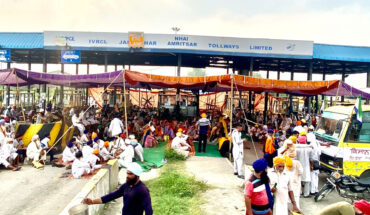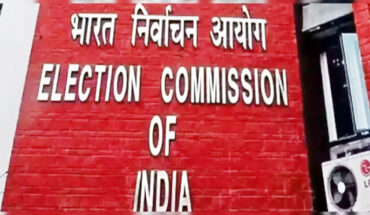Badri Narayan believes politics in Bihar will now evolve mostly around the BJP, the RJD and the Left
After a long day of counting on November 10, the results of the Bihar Assembly election are finally clear. The National Democratic Alliance (NDA) of the Bharatiya Janata Party (BJP), the Janata Dal (United), the Hindustani Awam Morcha (Secular) and the Vikassheel Insaan Party, with Nitish Kumar as its chief ministerial candidate, emerged as the winner in a very close contest against the Mahagathbandhan, an alliance of the Rashtriya Janata Dal (RJD), the Congress, and the Left parties, led by RJD chief Tejashwi Yadav, a young and energetic leader.
The NDA is set to form the government. But despite being the leader of a winning alliance, Mr. Kumar’s JD(U) suffered heavy losses. And despite losing the overall electoral battle, the RJD emerged as the single largest party in the Bihar Assembly with 75 seats, with the BJP being the second largest with 74. Another important feature of the election is that the Left parties performed very well and demonstrated an impressive strike rate. All this may have larger implications for Bihar politics.
He may become Chief Minister for a fourth term, but the results show deep anti-incumbency on the ground against Mr. Kumar. Despite the promises of the RJD — 10 lakh government jobs, reinstating government pension, loan waiver for farmers, etc. — the NDA won the election. How can we decipher the complexities of the result?
The first reason for the NDA’s victory is that the alliance of parties worked together to mobilise women, forward castes, a few Other Backward Classes, and Mahadalits. The Pachpaniya (a group of about 55 Extremely Backward Classes) remained a stronghold for Mr. Kumar. It is true that even among these communities, there were votes that went the Mahagathbandhan’s way, but not at a level which may have caused the ouster of the NDA from power. The voters of most of these social groups are considered not vocal but chuppa (silent) voters whose opinions could not be documented well by pollsters and political analysts.
The second reason may be that despite Mr. Yadav’s economic agenda, the election was still polarised along caste lines. The NDA managed to successfully form a larger rainbow alliance of castes compared to what the Mahagathbandhan was able to do. The youth, many of whom were moved by the promise of jobs, also seemed fragmented in their vote along caste lines at the time of voting; this benefited the NDA. It is true that issues like mismanagement of the pandemic and of the migrants cost Mr. Kumar votes and seats, but it looks like these feelings could not transform into votes for the Opposition as required and ultimately failed to produce a wave of change.
Though Mr. Kumar lost some influence among women voters, and despite poor implementation of some Central government schemes such as Ujjwala Yojana, the NDA still managed to get a substantial percentage women’s votes. More women than men voted in this election, which saved the NDA.
The third factor is that the Congress failed to make an impact on forward caste voters. The Muslim votes also got divided to a certain extent, especially in Seemanchal, and moved towards the Asaduddin Owaisi-led All India Majlis-E-Ittehadul Muslimeen. That is why the Congress won merely 19 seats.
This election has many implications for the future of politics in Bihar. One, the BJP has become more significant in the State. Mr. Kumar’s party has already diminished in stature and may become less significant. He also has less influence now in the coalition.
Two, the future of Bihar politics is going to revolve between two poles: the BJP and the RJD. Three, despite his defeat, Mr. Yadav has proved that he has emerged as a future alternative in the State.
Four, there has been a revival of Left politics and this could be significant. The Left parties got 18 seats, just one less than the Congress. The Left parties have their clusters of influence in a few parts in Bihar. They have also developed their base among sections of the poor, the marginalised and Dalit communities. The absence of towering Dalit leaders like Jagjivan Ram and Ram Vilas Paswan has left these parties with more space and opportunities to mobilise Dalits in their favour. This election result has also given us a clear indication that the parties which have committed cadres, either ideological cadres or caste-based ones, do well and may thrive in the future.
The politics of Bihar is going to evolve around the BJP, the RJD and the Left parties. The results provide a hint that democratic politics may become more challenging and competitive in the coming days.
The NDA is set to form the government. But despite being the leader of a winning alliance, Mr. Kumar’s JD(U) suffered heavy losses. And despite losing the overall electoral battle, the RJD emerged as the single largest party in the Bihar Assembly with 75 seats, with the BJP being the second largest with 74. Another important feature of the election is that the Left parties performed very well and demonstrated an impressive strike rate. All this may have larger implications for Bihar politics.
He may become Chief Minister for a fourth term, but the results show deep anti-incumbency on the ground against Mr. Kumar. Despite the promises of the RJD — 10 lakh government jobs, reinstating government pension, loan waiver for farmers, etc. — the NDA won the election. How can we decipher the complexities of the result?
The first reason for the NDA’s victory is that the alliance of parties worked together to mobilise women, forward castes, a few Other Backward Classes, and Mahadalits. The Pachpaniya (a group of about 55 Extremely Backward Classes) remained a stronghold for Mr. Kumar. It is true that even among these communities, there were votes that went the Mahagathbandhan’s way, but not at a level which may have caused the ouster of the NDA from power. The voters of most of these social groups are considered not vocal but chuppa (silent) voters whose opinions could not be documented well by pollsters and political analysts.
The second reason may be that despite Mr. Yadav’s economic agenda, the election was still polarised along caste lines. The NDA managed to successfully form a larger rainbow alliance of castes compared to what the Mahagathbandhan was able to do. The youth, many of whom were moved by the promise of jobs, also seemed fragmented in their vote along caste lines at the time of voting; this benefited the NDA. It is true that issues like mismanagement of the pandemic and of the migrants cost Mr. Kumar votes and seats, but it looks like these feelings could not transform into votes for the Opposition as required and ultimately failed to produce a wave of change.
Though Mr. Kumar lost some influence among women voters, and despite poor implementation of some Central government schemes such as Ujjwala Yojana, the NDA still managed to get a substantial percentage women’s votes. More women than men voted in this election, which saved the NDA.
The third factor is that the Congress failed to make an impact on forward caste voters. The Muslim votes also got divided to a certain extent, especially in Seemanchal, and moved towards the Asaduddin Owaisi-led All India Majlis-E-Ittehadul Muslimeen. That is why the Congress won merely 19 seats.
This election has many implications for the future of politics in Bihar. One, the BJP has become more significant in the State. Mr. Kumar’s party has already diminished in stature and may become less significant. He also has less influence now in the coalition.
Two, the future of Bihar politics is going to revolve between two poles: the BJP and the RJD. Three, despite his defeat, Mr. Yadav has proved that he has emerged as a future alternative in the State.
Four, there has been a revival of Left politics and this could be significant. The Left parties got 18 seats, just one less than the Congress. The Left parties have their clusters of influence in a few parts in Bihar. They have also developed their base among sections of the poor, the marginalised and Dalit communities. The absence of towering Dalit leaders like Jagjivan Ram and Ram Vilas Paswan has left these parties with more space and opportunities to mobilise Dalits in their favour. This election result has also given us a clear indication that the parties which have committed cadres, either ideological cadres or caste-based ones, do well and may thrive in the future.
The politics of Bihar is going to evolve around the BJP, the RJD and the Left parties. The results provide a hint that democratic politics may become more challenging and competitive in the coming days.
Badri Narayan is Director of the G.B. Pant Social Science Institute, Allahabad. Views expressed are his own






